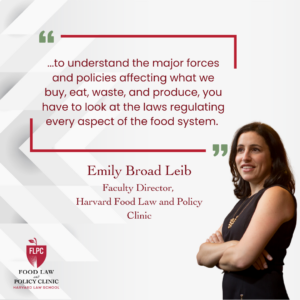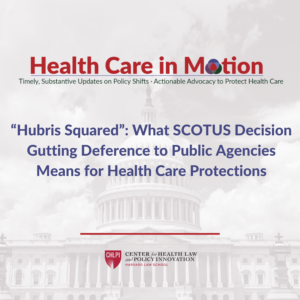Originally written by Gray Norton, FLPC Summer Intern
To remedy well-documented and uncontested discrimination against Socially Disadvantaged Farmers and Ranchers (SDFRs), Congress enacted Section 1005 of the American Rescue Plan Act (”Section 1005”). Section 1005 authorizes the United States Department of Agriculture (“USDA”) to issue debt-relief payments (up to 120% of loan balances as of January 1, 2021) to SDFRs who have outstanding direct and guaranteed farm loan balances. Section 1005 refers to the Food, Agriculture Conservation, and Trade Act of 1990 (7 U.S.C. 2279(a)), which defines an SDFR as “a farmer or rancher who is a member of a socially disadvantaged group.” The statute clarifies that a socially disadvantaged group is a “group whose members have been subjected to racial or ethnic prejudice because of their identity as members of the group without regard to their individual qualities.” (FLPC supports the debt relief program.)
The USDA Farm Service Agency’s (“FSA”) Notice of Funding Availability (“NOFA”) for the program provides a non-exhaustive list of members of socially disadvantaged groups, which includes American Indians or Alaskan Natives; Asian; Blacks or African Americans; Native Hawaiians or Pacific Islanders; and Hispanics or Latinos. According to the NOFA, people who identify as members of other groups may apply to the USDA for inclusion, and the Secretary will consider them on a case-by-case basis. If a farmer or rancher can prove they are a member of a group who has been subjected to racial or ethnic prejudice because of their identity as a member of the group, they are eligible for the assistance.
The USDA originally planned to begin distributing payments in June, but the relief is currently on hold due to pending litigation in several states. There are twelve cases challenging Section 1005, and in each case, the plaintiff is a white farmer(s) claiming that the debt-relief program discriminates against them based on race.
The pending litigation and the plaintiffs’ claims
The plaintiffs in each of the pending cases claim that the debt-relief program is unconstitutional because it discriminates against them based on race, thus denying them equal protection of the law. While some of the cases present additional claims, the plaintiffs’ core concern is that Section 1005 is an impermissible racial classification because the farmers and ranchers must be members of one of the groups identified in the NOFA. Courts apply strict scrutiny review to laws that include facially race-based classifications. For a race-based classification to survive strict scrutiny, the Government must show that (1) the racial classification at issue is necessary to achieve a compelling governmental interest and (2) the legal remedy is narrowly tailored to serve that interest.
District courts in Florida, Texas, and Tennessee have issued preliminary injunctions that halted the USDA from distributing the debt relief. The courts granting injunctions have held that (among other factors considered) the plaintiffs would likely succeed on the merits of their claim because Section 1005 excludes white farmers from the debt-relief program solely based on race, and without an injunction, the plaintiffs would suffer irreparable harm from the exclusion once the SDFRs receive their debt-relief payments. Therefore, the USDA cannot currently implement the debt-relief program.
The Government’s response
The Government argued that the program should survive strict scrutiny—that remedying the enduring effects of the agency’s past discrimination against SDFRs in USDA programs is a compelling interest that is neither overbroad nor underinclusive. The USDA has admitted and documented its past discrimination against socially disadvantaged producers—especially Black farmers—and the Government asserted that previous attempts to remedy the discrimination have failed. Further, the Government offered evidence to show that socially disadvantaged producers have continued to face discrimination.
The Government also argued that Section 1005 is narrowly tailored because it directly responds to USDA’s discrimination against SDFRs. Moreover, it “does not impose an unacceptable burden on third parties,” such as white farmers, because there is no evidence that USDA has denied white farmers equal treatment.[1] For example, white farmers received almost all the assistance (97%) from the Coronavirus Food Assistance Program (“CFAP”), and Black Farmers received only 0.1% of those relief funds. The Section 1005 debt-relief program attempts to remedy the documented systemic discrimination and balance the Covid relief allocations. According to the Government, Congress has an interest in ensuring that its funding does not contribute to discrimination, and the documented evidence of the government’s role in perpetrating the discrimination supports the remedy.
The court’s analysis
In response, the District Courts for the Western District of Tennessee and the Middle District of Florida found that the Government has already used the evidence of past discrimination to formulate remedial programs for SDFRs, and while the Government will have the opportunity to present additional evidence at a trial on the merits, there is nothing currently in the record that justifies the additional remediation that Section 1005 seeks to provide. The District Court for the Northern District of Texas arrived at a similar conclusion.
The courts held that even if remedying past discrimination were a compelling interest, the debt relief program is not narrowly tailored to serve that interest because the Government’s evidence did not demonstrate specific instances of intentional discrimination against SDFRs who hold qualifying USDA loans. Additionally, any SDFRs who may have experienced racial discrimination but do not hold qualifying loans are not eligible for the relief, making Section 1005 underinclusive according to the courts.
The courts also agreed with the plaintiffs’ argument that the USDA’s CFAP did not unfairly favor white farmers because the relief was not based on race; instead, it was allocated for larger farm operations and specific crops, such as soybeans. The courts’ findings overlook the fact that white farmers disproportionately own larger farms and produce the specific crops targeted in the CFAP, and as a result, the program had a disparate impact on SDFRs. As the Government argued, Section 1005 seeks to remedy the imbalance. Nevertheless, the recent court orders have agreed with the plaintiffs and found that Section 1005 is an impermissible racial classification (based on the current evidentiary record). Therefore, under the preliminary injunction orders, the USDA cannot distribute debt-relief payments to SDFRs until further notice.
Is the debt relief program actually race-based?
The courts and parties have seemingly agreed that the debt-relief program involves a racial classification and is subject to strict scrutiny. While the Government asserted that the list of groups in the NOFA was non-exhaustive (and thus, not exclusive), the thrust of the Government’s argument in the briefings was that Section 1005 passes strict scrutiny. Moreover, the Tennessee preliminary injunction order indicates that the Government agreed that Section 1005 is subject to strict scrutiny because it facially distinguishes debt-relief program applicants by race.
However, an argument could be made that the program is race-neutral. The complaints (and, in turn, the courts’ orders) mischaracterize the program’s eligibility requirements. As written, Section 1005 provides a race-neutral remedy to farmers and ranchers who have encountered discrimination in USDA programs. The relief is not available simply because someone is of a specific race; it is available because members of a specific group experienced racial or ethnic discrimination. In other words, the focus is not on who is included in the law but on why the remedy is available.
Furthermore, neither Section 1005 nor the NOFA explicitly exclude any specific racial groups from the debt-relief program. People who identify as members of groups not listed in the NOFA may apply to the USDA for inclusion on a case-by-case basis. Still, courts thus far have not taken up the argument that Section 1005 is race-neutral, making it a much more challenging case for the Government.
Similar laws may offer support for the lawfulness of the program. Harvard Law School professor Niko Bowie suggests that Section 1005 is like the Civil Rights Act of 1964 and the Refugee Act of 1980—two laws that remedy racial discrimination and are race-neutral. According to Bowie, if the USDA finds that Black farmers are eligible for the Section 1005 debt-relief payments because they have experienced racial discrimination, it would be the same scenario as the Equal Employment Opportunity Commission determining that a Black employee suffered racial discrimination and should be afforded a remedy. Bowie suggests that Section 1005 is even more like the Refugee Act of 1980, which defines “refugee” as someone who fears “persecution on account of race, religion, nationality, [or] membership in a particular social group . . . .” And like the Refugee Act of 1980, Section 1005 seeks to help members of racial groups who have experienced racial discrimination as a whole group. Therefore, Section 1005 is a race-neutral law that provides a remedy to racial discrimination, and Bowie posits that presuming it is an unconstitutional race-based classification could have far-reaching implications for other anti-discrimination laws.
Nevertheless, the ARPA debt-relief program is on hold while the litigation proceeds. The Government will likely appeal the preliminary injunction orders. In the meantime, the USDA will not take adverse actions against eligible SDFR borrowers who do not make payments on eligible FSA Direct Loans (loans issued by USDA/FSA directly to the borrower). However, urgency remains because third-party lenders that hold USDA guaranteed loans (loans of which the USDA repays the vast majority to the lender if the borrower defaults) may not similarly defer adverse action. As many SDFRs have faced, and continue to face, the pandemic’s economic hardships without USDA support, those holding guaranteed loans need the debt-relief payments to avoid default and losing their farms.
—-
[1] Def.’s Opp’n to Pls.’s Mot. Prelim. Inj., 27, Holman v. Vilsack, 1:21-cv-01085-STA-jay (W.D. Tenn.); Def.’s Opp’n to Pls.’s Mot. Prelim. Inj., 33, Wynn v. Vilsack, No. 3:21-cv-00514-MMH-JRK (M.D. Fla.).


Health Law & Policy, Commentary
Braidwood Management v. Becerra: Updated FAQs for Health Advocates and Providers
July 22, 2024